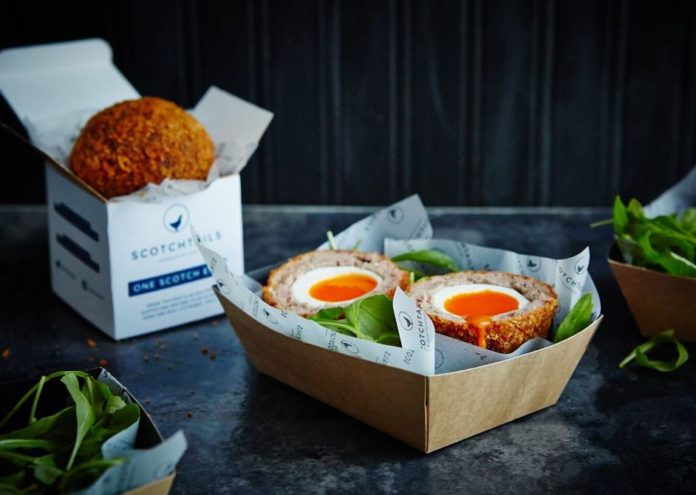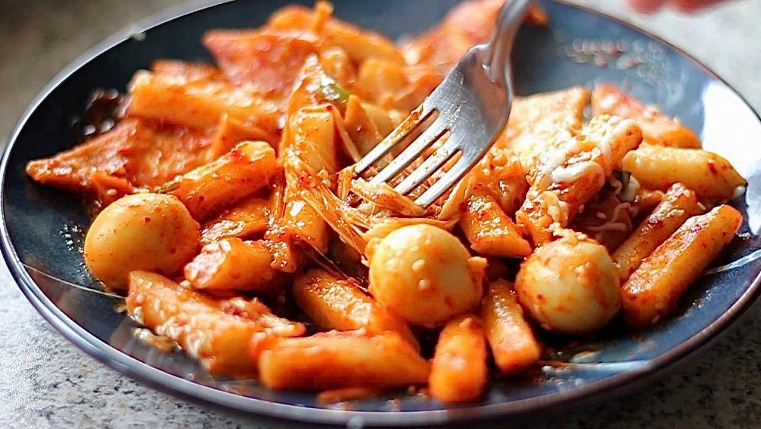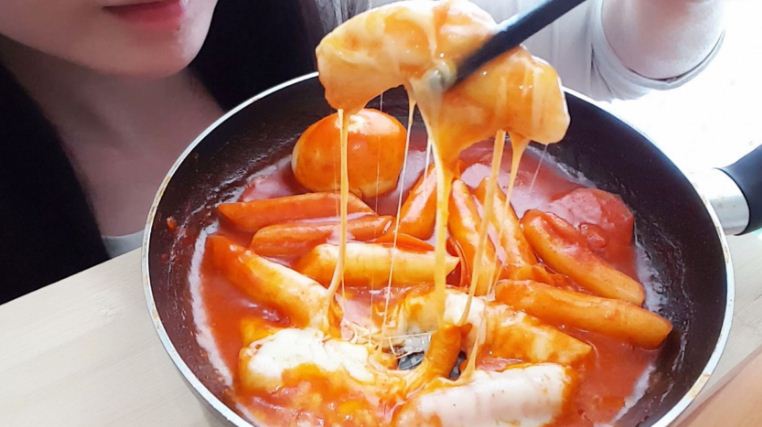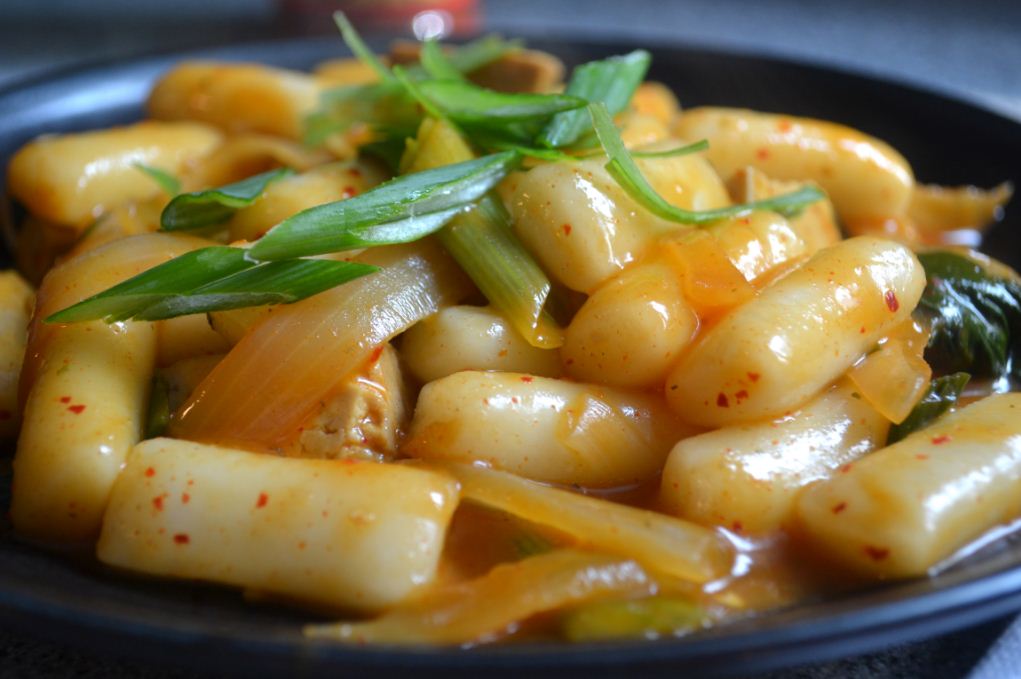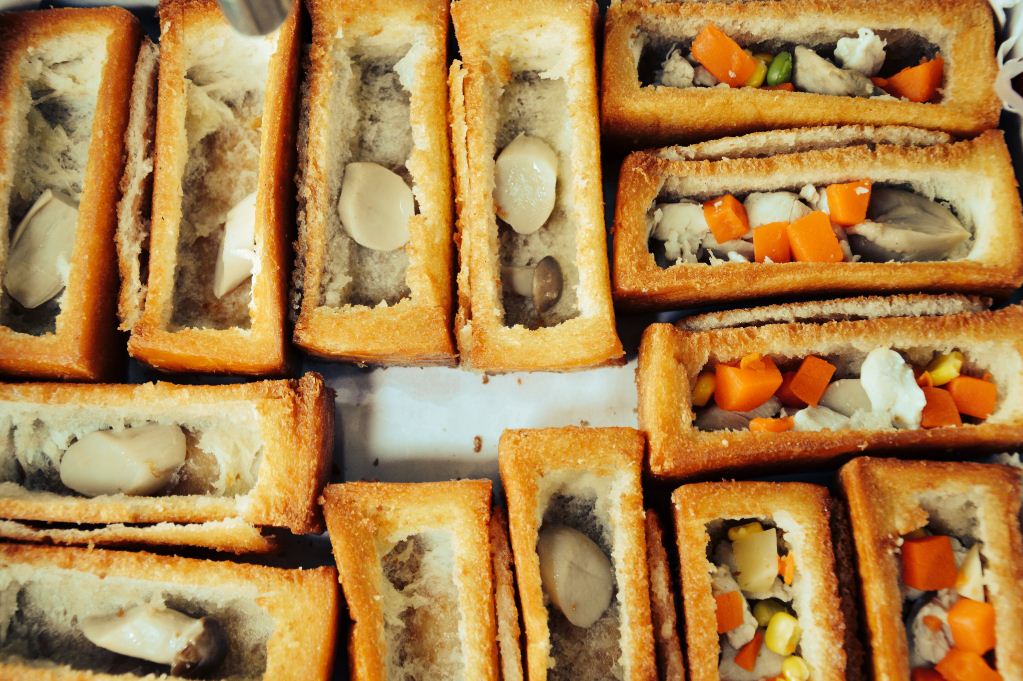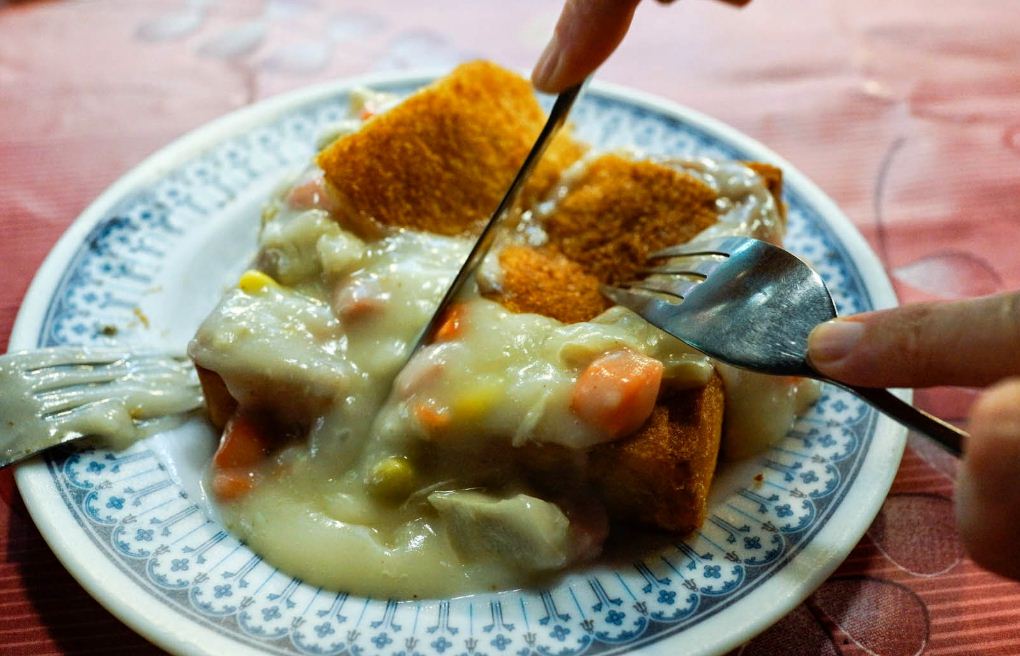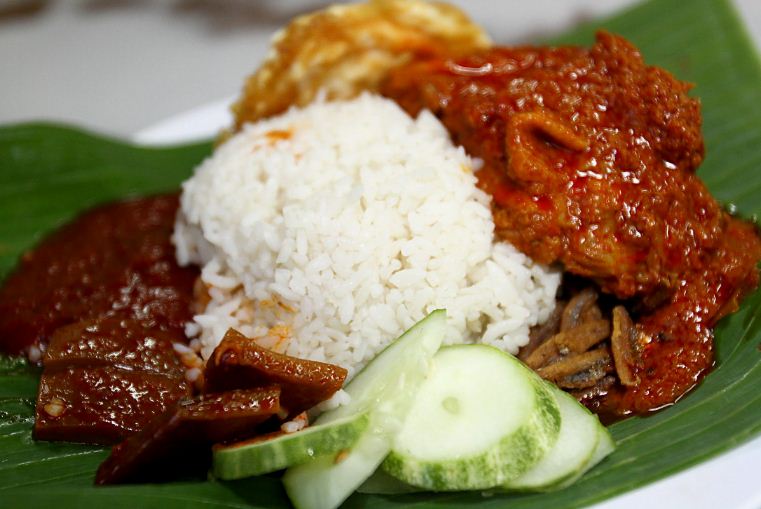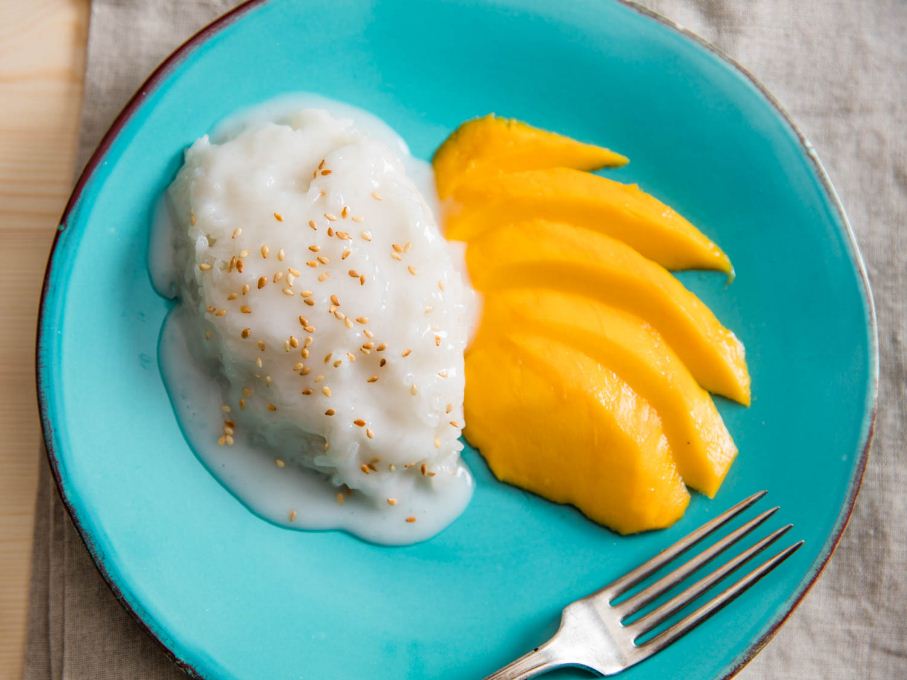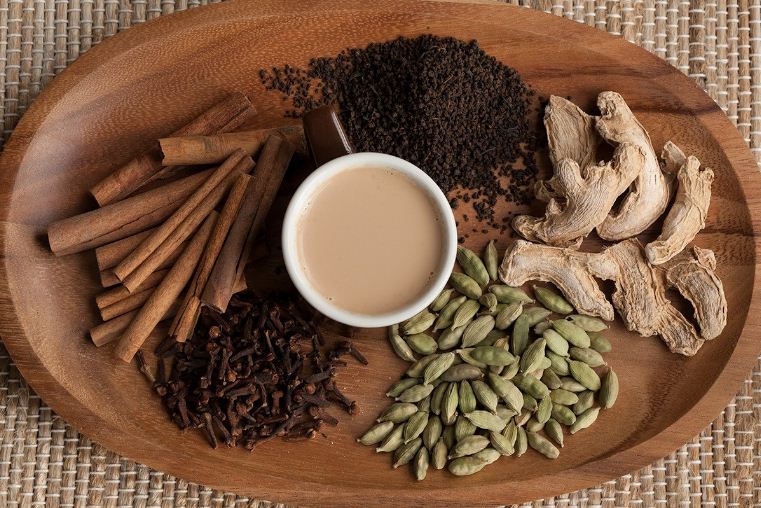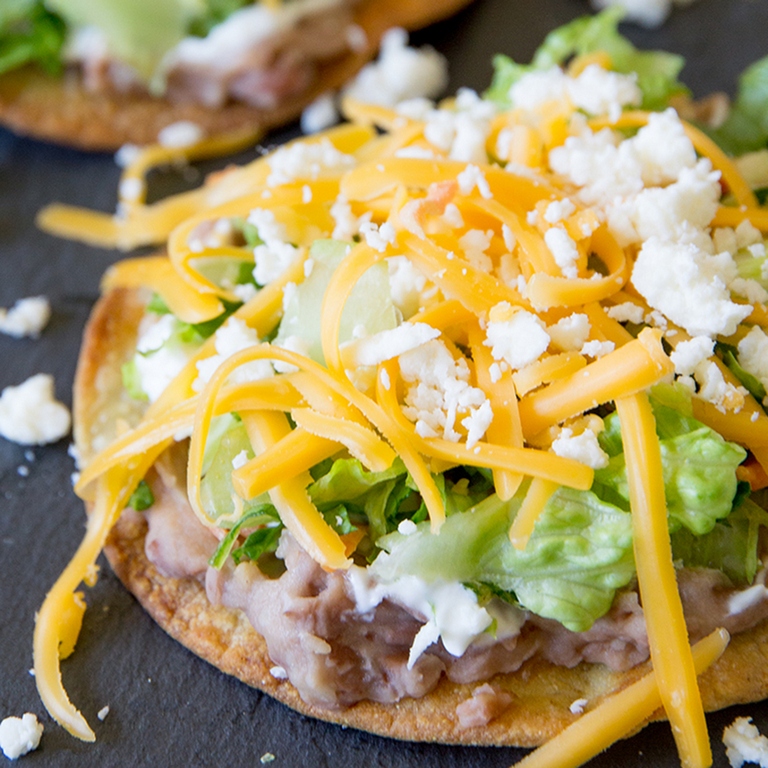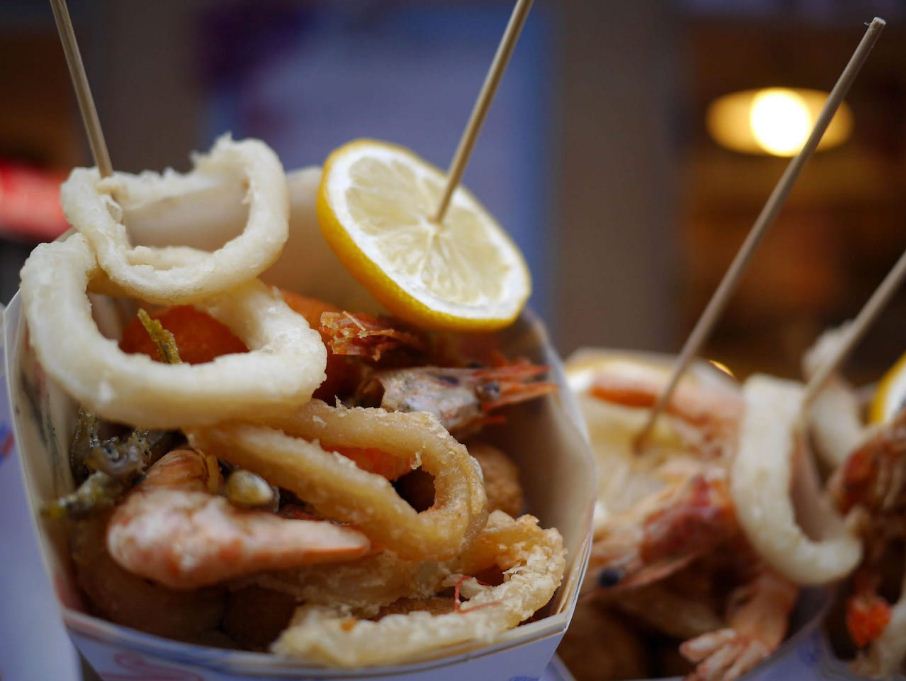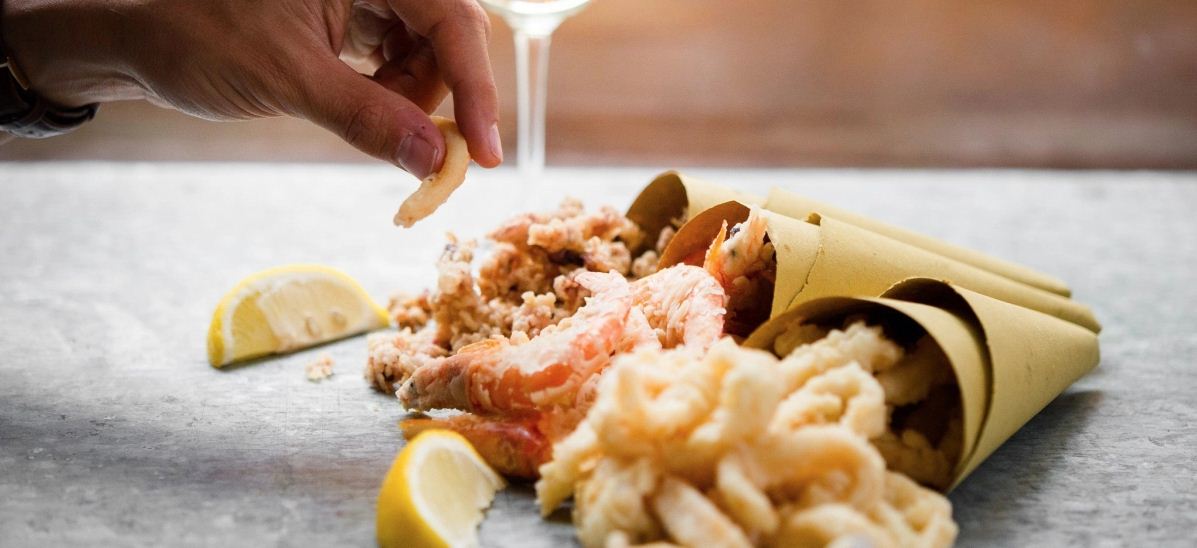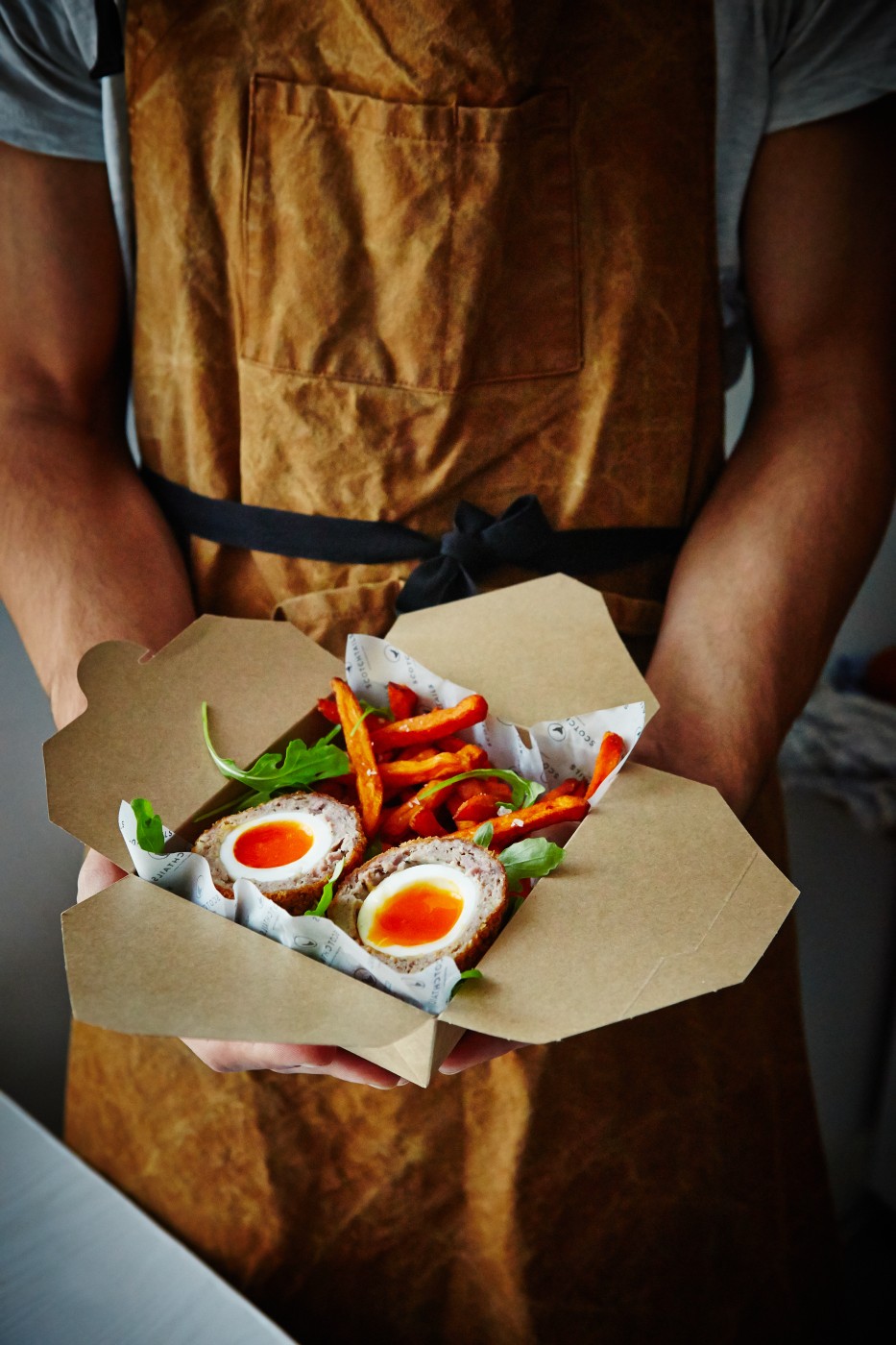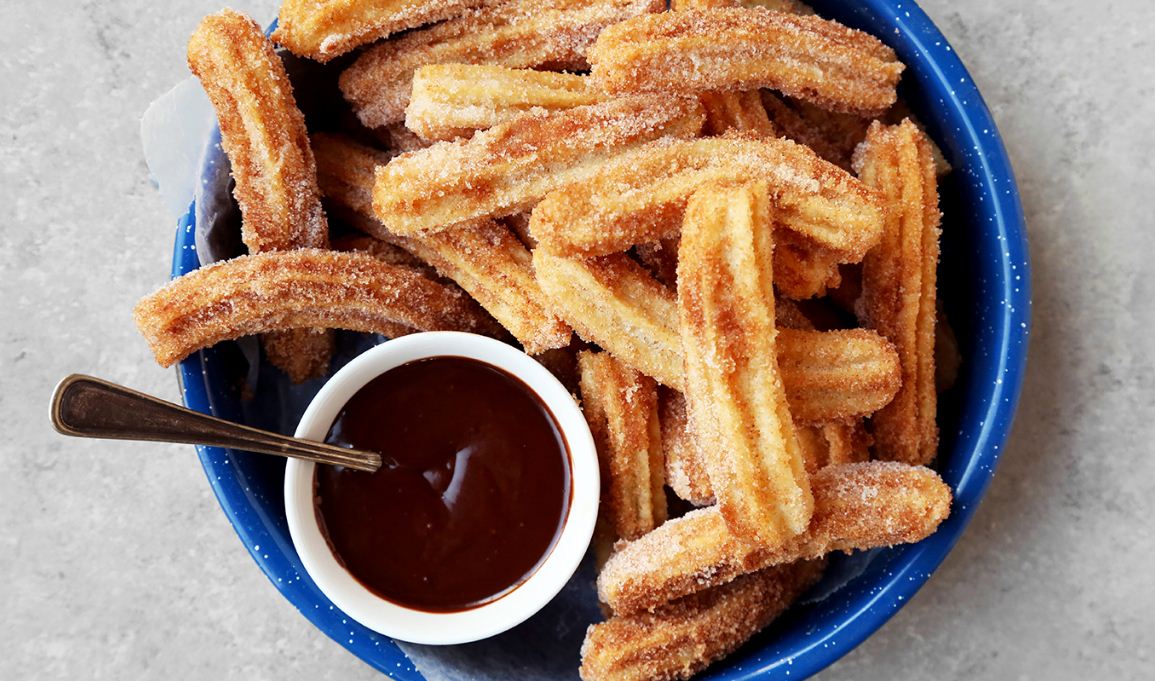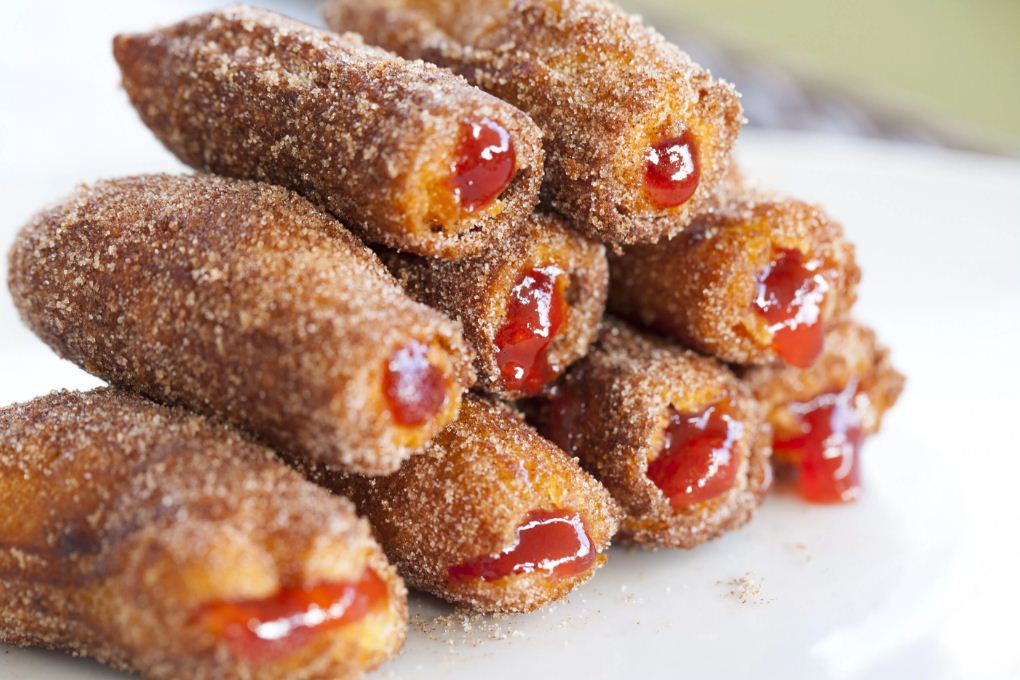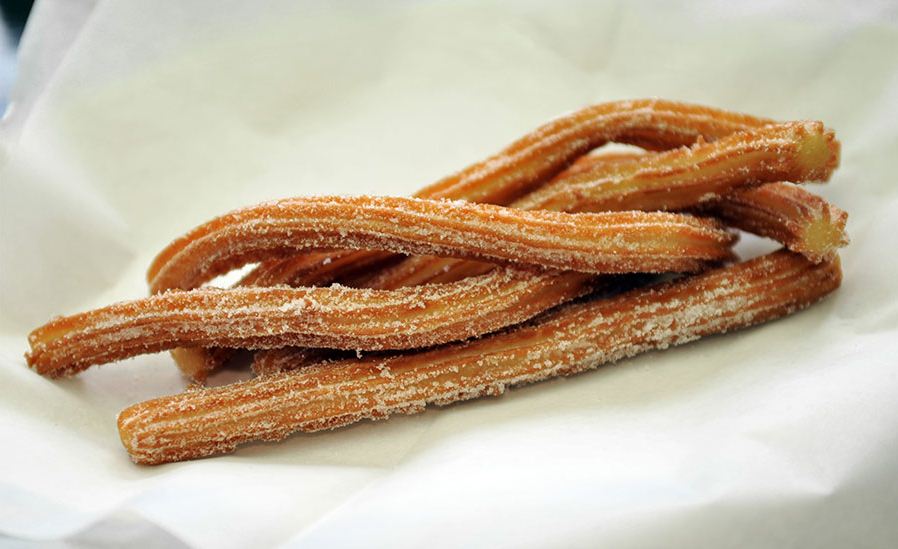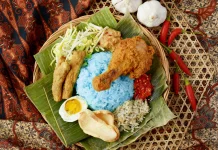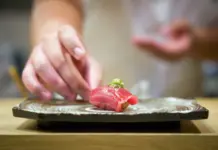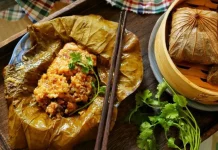Street food has always been one of the main appeals for travelers exploring a new country. Although street food is neither prepared in a sophisticated way nor served at swanky restaurants, these dishes are the main representatives for each unique culinary culture. Each dish seems to bear the distinctions of the traditions, the climate and the geographic features of its country that make street food around the world is extremely diverse and rich. Go with Living Nomads’s reporters to 9 nations to explore 9 famous signature street dishes, each delighting guests in different ways.
- Bali food guide — 10 best local foods in Bali & best places to find them
- Korean must eat food — Top 14 food you must eat in South Korea
- Best Korean street food — Top 22 best street food in Korea & Seoul you definitely must-eat
- Where to eat in Luang Prabang? — Top 5 most famous & best restaurants in Luang Prabang
- Visit Din Tai Fung Taipei Original (Din Tai Fung Xinyi) — Tasting the best dimsum at the best dimsum restaurant in the world
Tteokbokki, South Korea — Warm your heart with the spicy taste
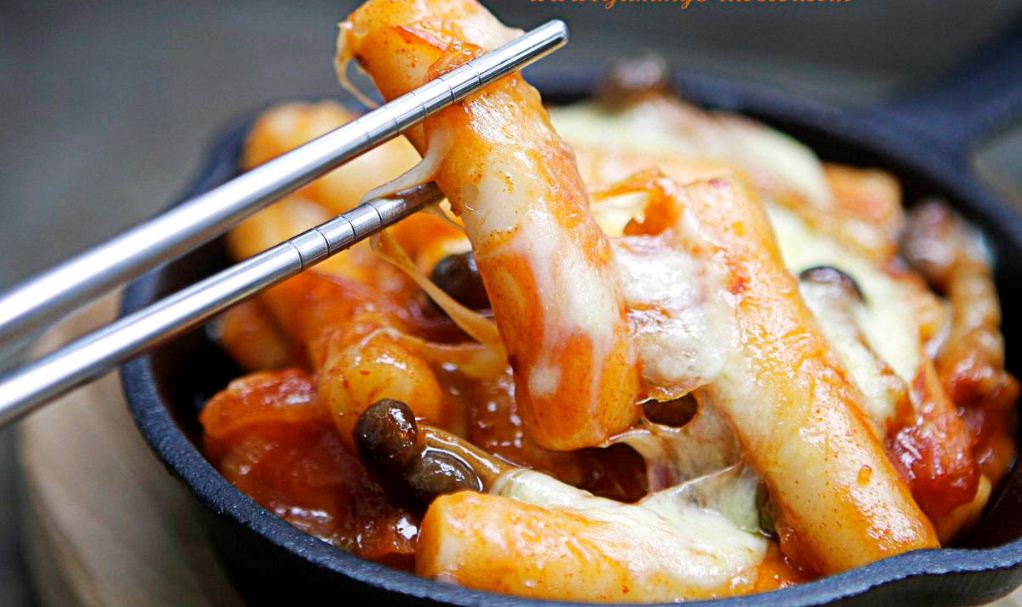
Tteokbokki, or spicy stir-fried rice cake, is considered a cultural symbol of Korea and its people. Its attractive red color and special spicy taste can warm the heart of any diner at any age. This is the reason why tteokbokki has become the most favored snack food in Korea, attracting locals and international tourists alike.
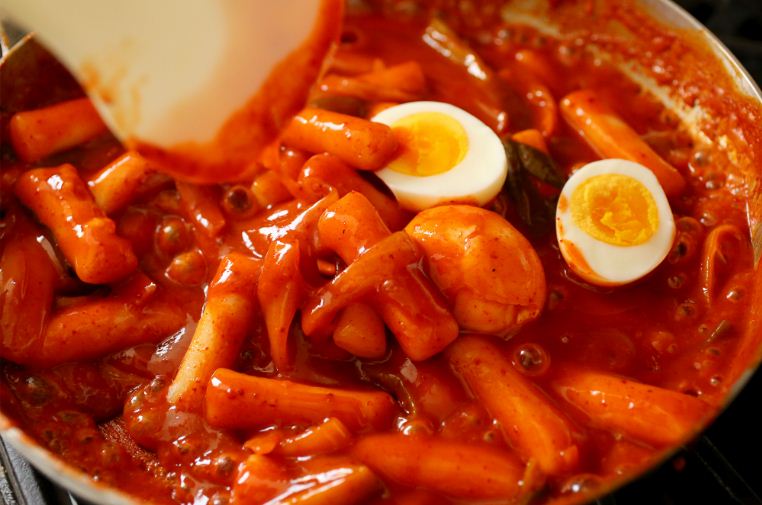
Traditionally, tteokbokki is made from garaetteok rice cake, gochujang red chili sauce, meat, egg, spices and vegetables. Nowadays, other ingredients such as carrot, beef, bacon and seafood can be added, depending on the diners’ taste and vendors’ style. The “soul” of tteokbokki is its gochujang red chili sauce. It is often so spicy that diners, especially those who are not accustomed to spicy dishes, are intimidated to try this dish for the first time. On the other hand, spicy food lovers relish this dish without hesitation.
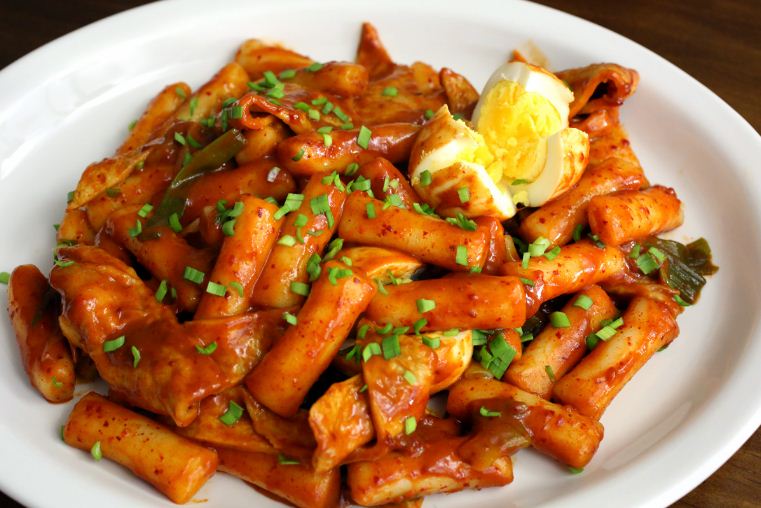
When autumn and its gentle winds come to town, order this dish from a street vendor and fill your empty stomach with a smoky bowl of soft round pieces of rice cake covered with a thick red-hot sauce. Then, you will know how this simple dish has mesmerized countless visitors exploring Korea.

Guan Cha Bun, Taiwan — Delicious dish in the shape of coffin
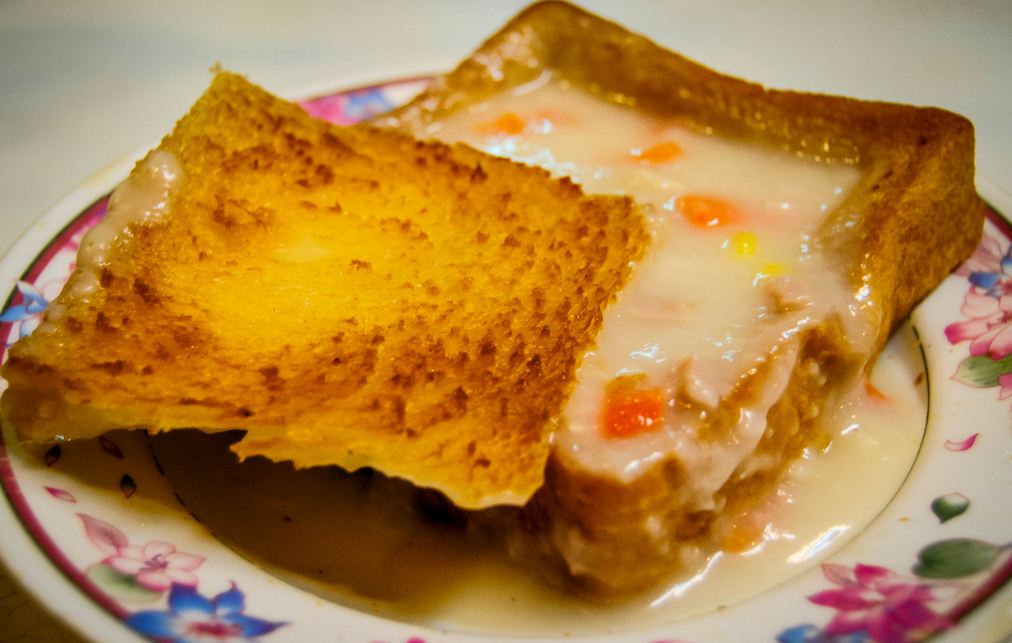
Guan Cha Bun (coffin bread) is a popular street food in Taiwan. The initial appeal of the dish is its special name that makes visitors very curious. Assembling pieces of bread into a small coffin-shape gives Guan Cha Bun its interesting look, combined with its European flavors, it is the favorite choice for teenagers and the elderly alike in Taiwan.
Guan Cha Bun is served in the shape of a small coffin made of bread. The bread is cooled down after being fried to preserve its firm shape. Its original filling is removed and its crust is kept to make the lid of the coffin. Seafood, carrots, beef, potatoes, onions, mushrooms, chili and sweet corn are stir-fried with a special kind of cream sauce to make the new filling for the bread. Diners can start enjoying their “coffin” by eating the lip first then the filling. The great combination of rich filling with cream sauce and the crispy crust surely brings visitors a new memorable dining experience. For vegetarians, the filling is made from tofu, margarine and vegetables.
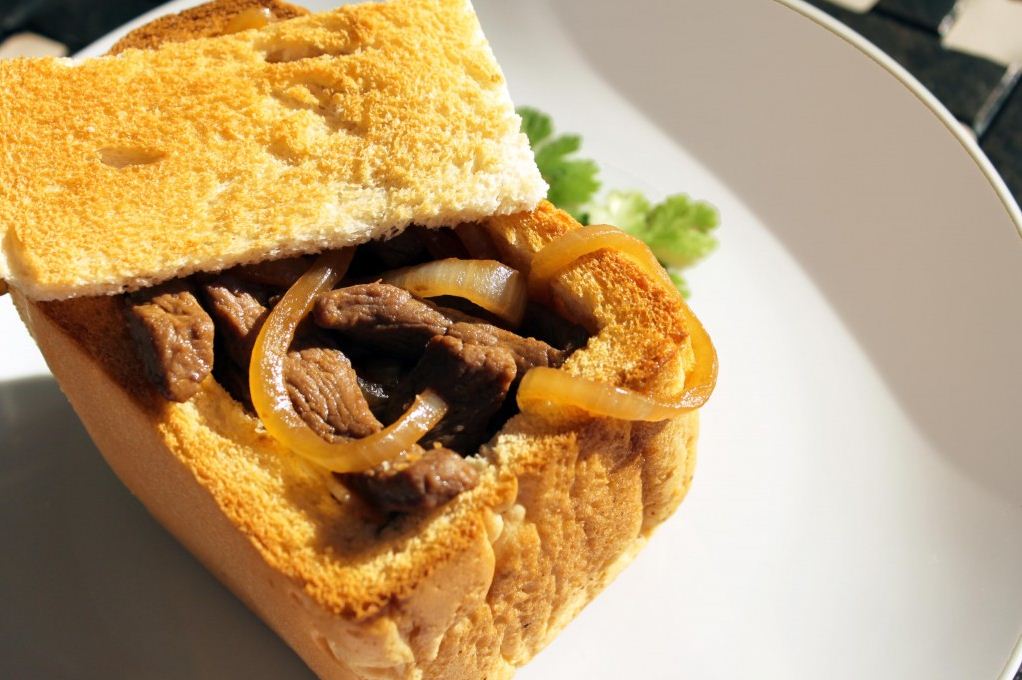
The more ingredients being used to make the filling, the more flavors the dish has. On each street, with different vendors, you can enjoy various unique versions of Guan Cha Bun. Is this curiosity appealing enough to attract you to Taiwan?
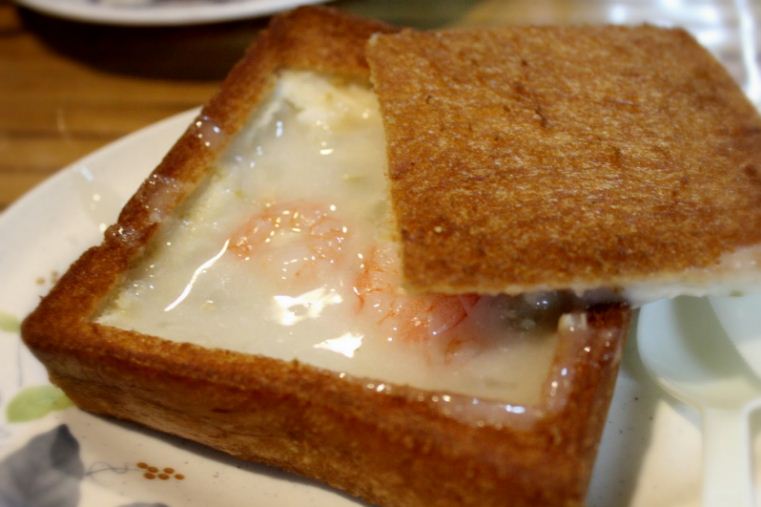
Nasi Lemak, Malaysia — Coconut scent on every corner
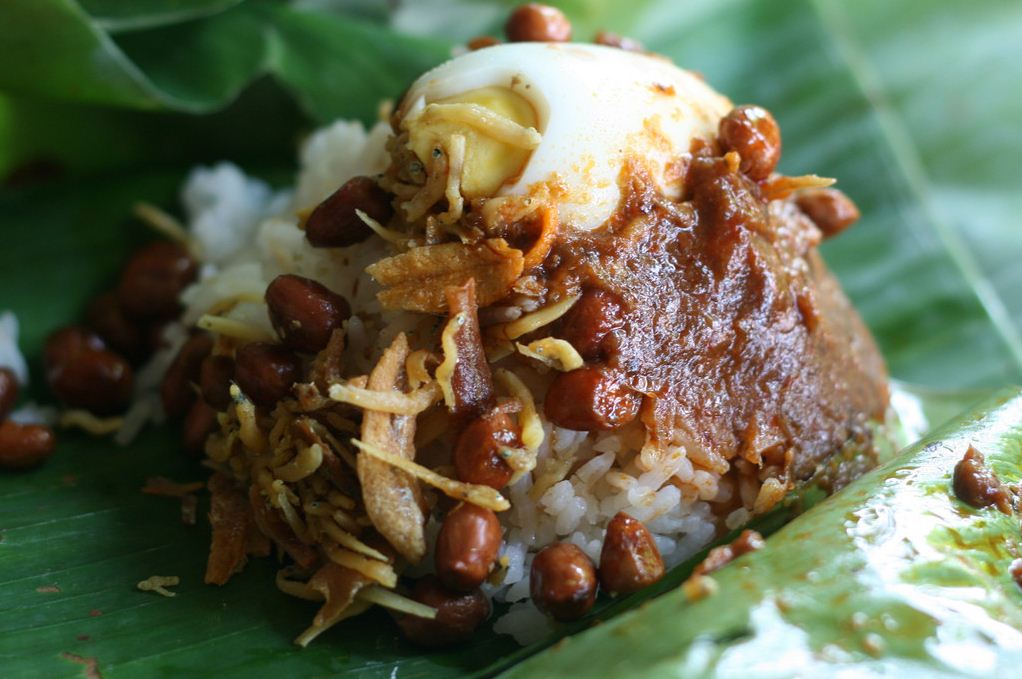
Nasi Lemak is a famous specialty of Malaysia. Come to this country, and on any street, visitors can easily find street vendors or food stalls selling Nasi Lemak. Inspired by this street food, nowadays, Nasi Lemak is also commonly served in schools and airports all the time.
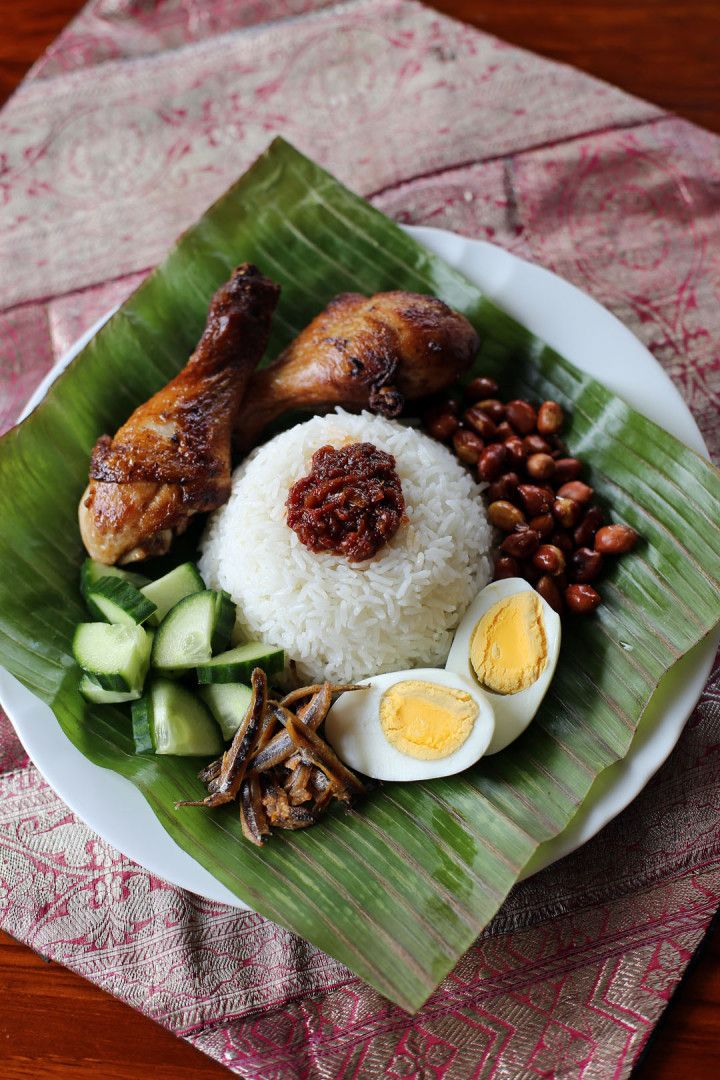
Its recipe is quite simple. Rice is steamed with coconut water and accompanied with cucumber, toasted peanuts, dried fish, chili, alpinia and other types of meat such as chicken, beef, seafood and lamb curry. When enjoying Nasi Lemak, you can enjoy the rich taste of coconut water, the sweet and salty flavors of fried seafood as well as the spicy taste of chili and alpinia. Despite being made from simple ingredients and spices, this dish is renowned for the way Malaysians prepare it. Their technique and cooking ratio are key factors in making Nasi Lemak unique. Just try Nasi Lemak cooked by locals and you’ll know, it’s hard to forget its flavors.
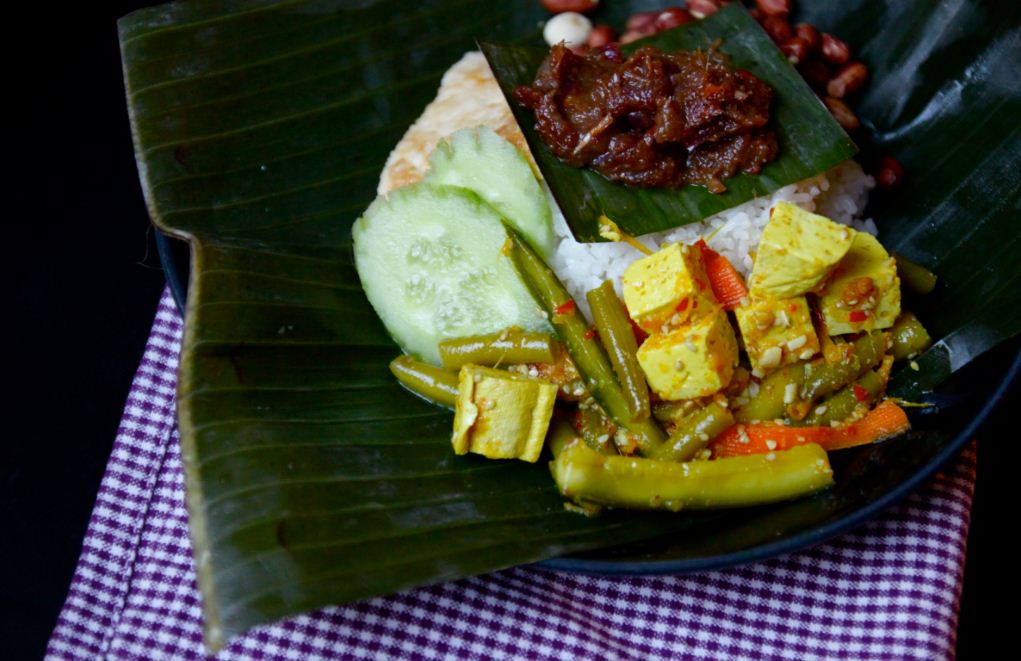
Mango sticky rice, Thailand — Sweet tropical flavor
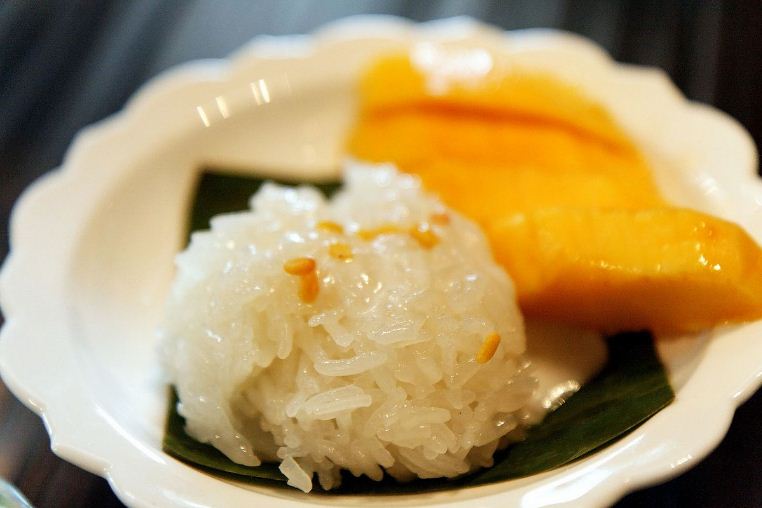
With its origin in this tropical country, Thailand sticky rice usually consists of coconut milk and other familiar tropical fruits such as mango, durian, jackfruit and banana. Trying mango sticky rice is always on the to-do list of any visitors exploring this country of temples. Travelers can easily find this street food on any road or at any crowed market throughout the country from Bangkok, Pattaya to Hua Hin.
The main components of the dish are steamed sticky rice, ripe mango and coconut milk. Considered as a dessert, a small portion will be prepared right after you choose your main course. Cool sticky rice is set on a plate with some slices of yellow mango with coconut milk poured on top. Take your time enjoying this delicacy; diner can savor this glutinous rice blended with the sweetness of ripe mango and the aroma of coconut milk. Mango sticky rice is favored not only for its taste but also for its beautiful colors. A little toasted sesame and some fibers of fresh coconut can be added to make the dish even more flavorsome.
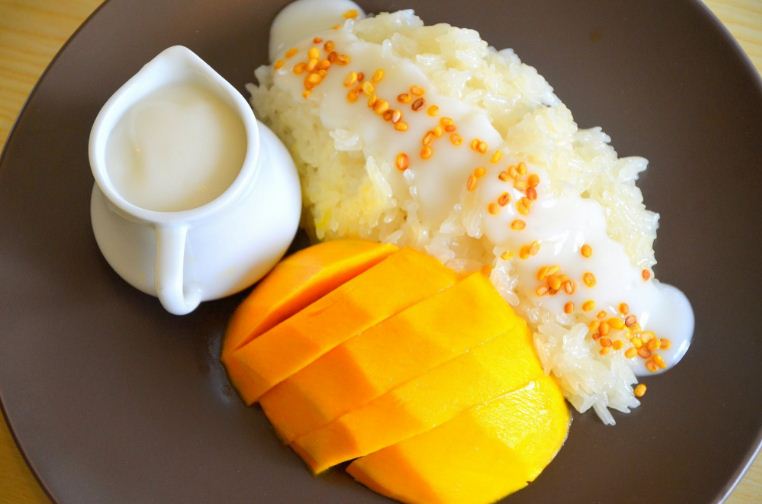
Sitting on a boat, traveling along the river, getting lost in a floating market while enjoying mango sticky rice, is there anything else better?
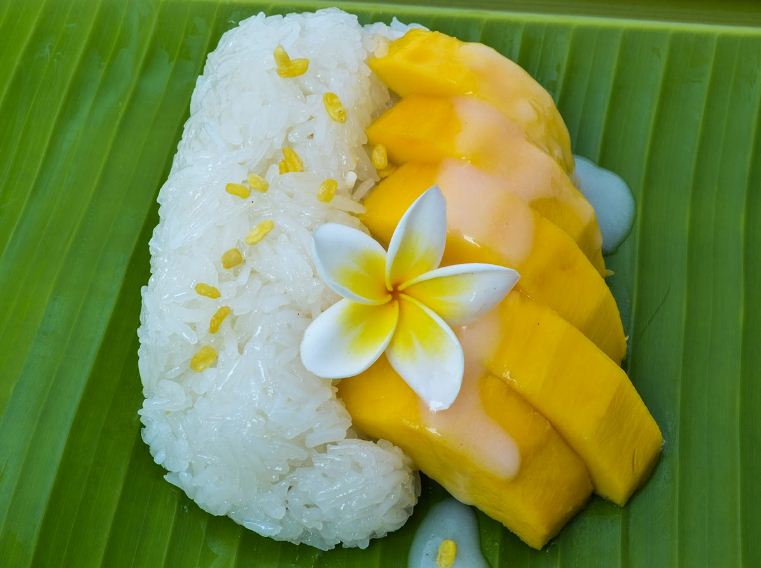
Masala Chai, India — Unique spice tea

Indian cuisine is well known for its sophisticated use of spices and herbs in different dishes and beverages. Whenever talking about Indian street food, no visitor can go without mentioning the appealing aroma of Masala Chai, the perfect combination of tea and aromatic spices and herbs.
Historically, Indians viewed Masala Chai as an herbal medicine rather than as a recreational beverage. However, this drink has become more and more popular with locals and visitors. The main ingredients of Masala Chai include tea, milk, sweetener, spices and herbs.
There is no fixed recipe for this beverage. While Ceylon black tea is often used at restaurants, Mamri tea seeds are favored by locals and sold by vendors. Each vendor also chooses a different type of sweetener to make his own version of the tea. Plain white sugar, sugar candy, jaggery, molasses or even honey is used. Making the signature spicy flavor of Masala Chai are various types of spices and herbs including pepper, ginger, star anise, cardamom, nutmeg and cloves. If you want to make your own tea, you can buy these ingredients at any Indian market.
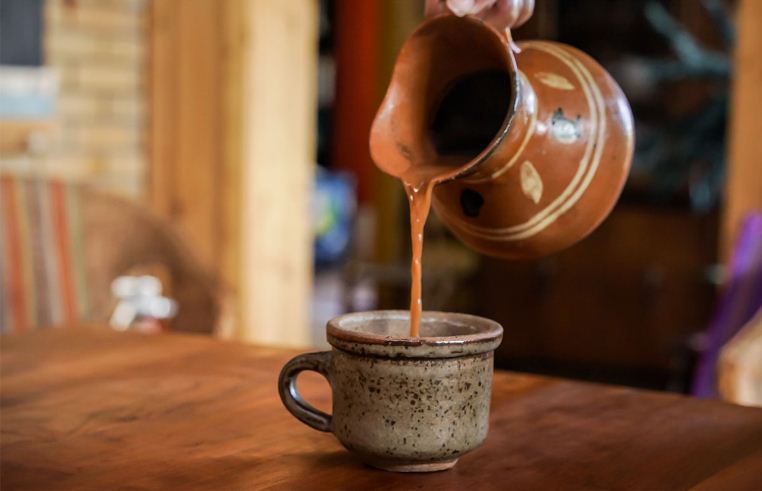
The most common way to enjoy Masala in India is to stop on a sidewalk or in residential area and wait for the vendor that prepares the tea in a copper pot. The tea will be poured out into an enameled terra-cotta cup through a filtered net.

A cup of aromatic hot Masala Chai in the early morning or in the evening with gentle winds blowing outside the window can be a great memory that you can bring back home after your journey to the land of Buddha.
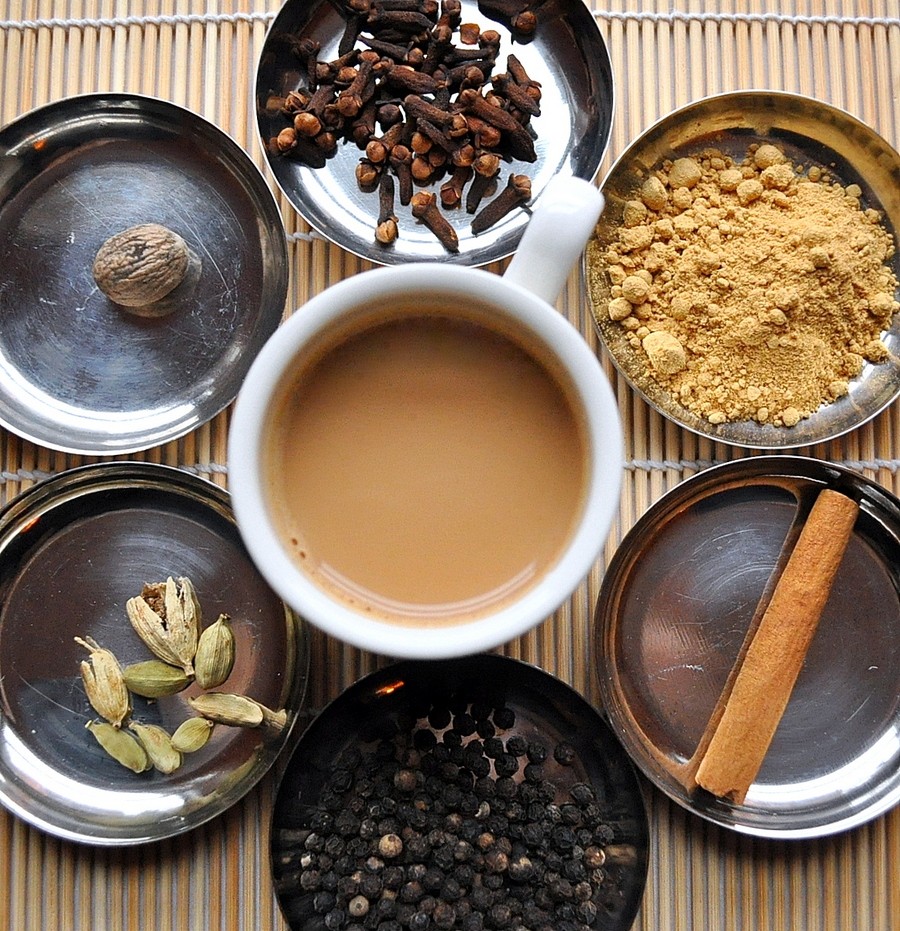
Tostada, Mexico — Challenge your ingenuity with Tostada
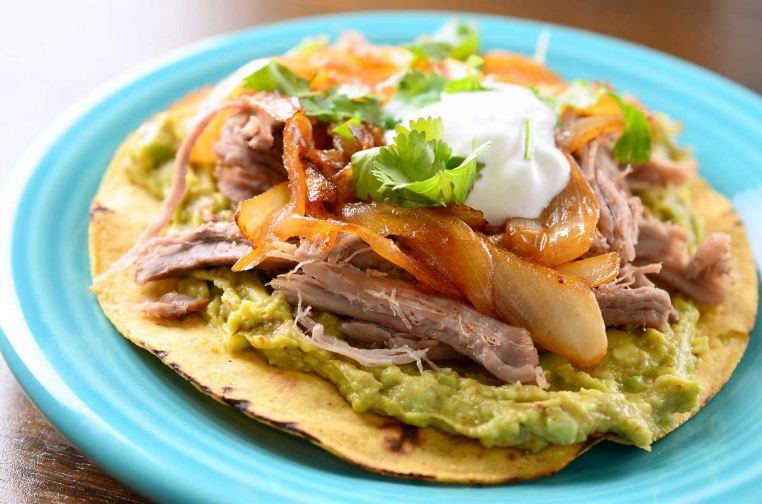
It is said that if you haven’t enjoyed Tostada on the sidewalk, then you have only explored half of Mexico. Tostada usually refers to a flat or bowl-shaped tortilla. Originally, the tostada avoided waste when tortillas were not fresh enough to be made into tacos (a traditional Mexican dish), but were made fresh enough to be eaten. The tortilla is fried in boiling oil until it becomes golden, rigid and crunchy. Mexicans add toppings to make it more delicious. The toppings include beans, meat, cream, chopped lettuce, sliced onions, butter and cheese.

Nowadays, there are many versions of tostada. The most popular one is tostada with cooked chicken or pork. They are also popular ones with seafood such as tuna, shrimp, crab, and chopped octopus or with vegetarian toppings as well.
Since its toppings consist of chopped ingredients put on a thin tortilla, tostada is a challenge for your ingenuity. If you are not careful enough, the toppings and garnishes will fall off while being eaten, making your space a mess of tiny pieces of food. Why don’t you challenge yourself and make your adventure in Mexico even more exciting?
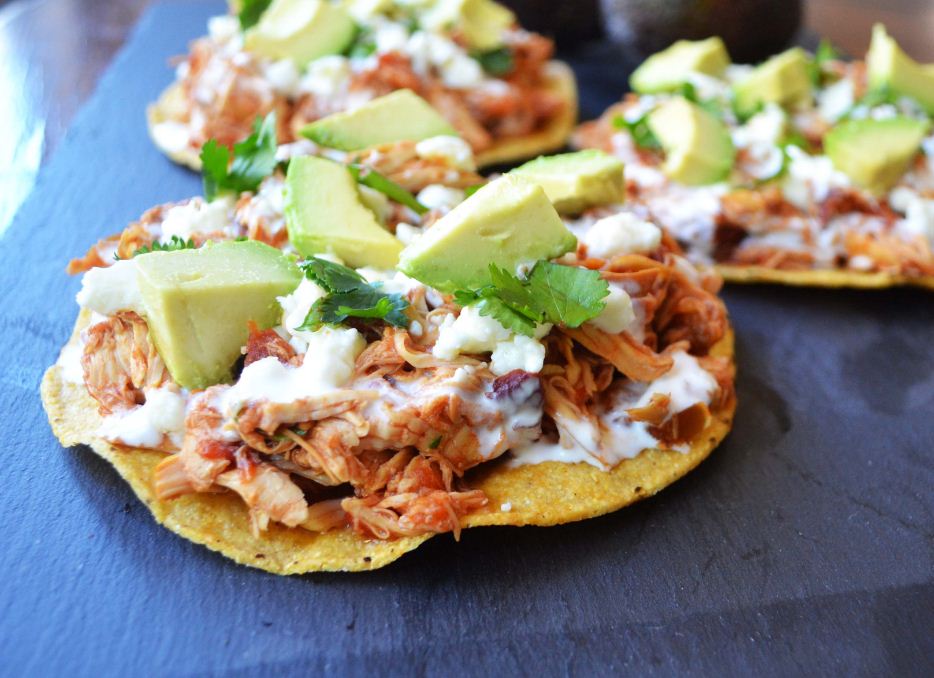
Pesce Fritto Al Cono, Italy — Aromatic and crispy like “mother’s gifts”
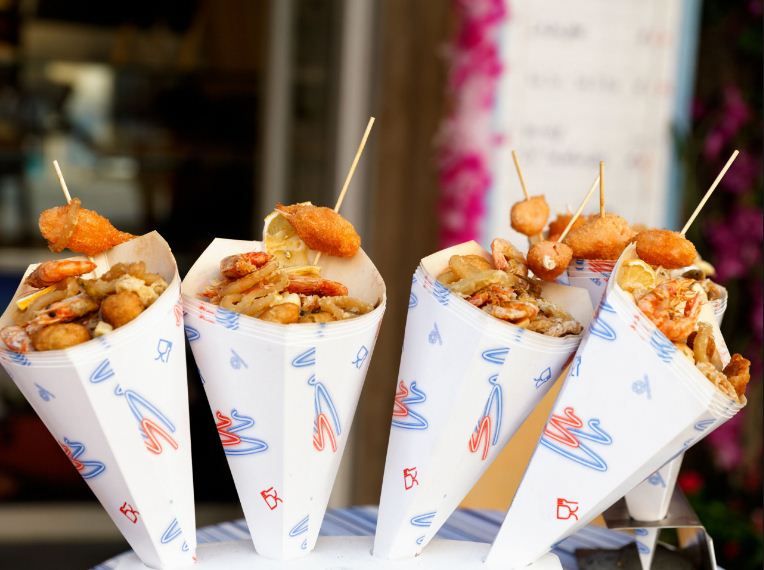
Pesce Fritto Al Cono is the most famous street food in Italy thanks to its signature Mediterranean flavor. At first glance, you will be reminded of the small snacks your mother would wrap up for you in a piece of old newspaper. When you were a child, did you ever feel excited to share some snacks with your friends?
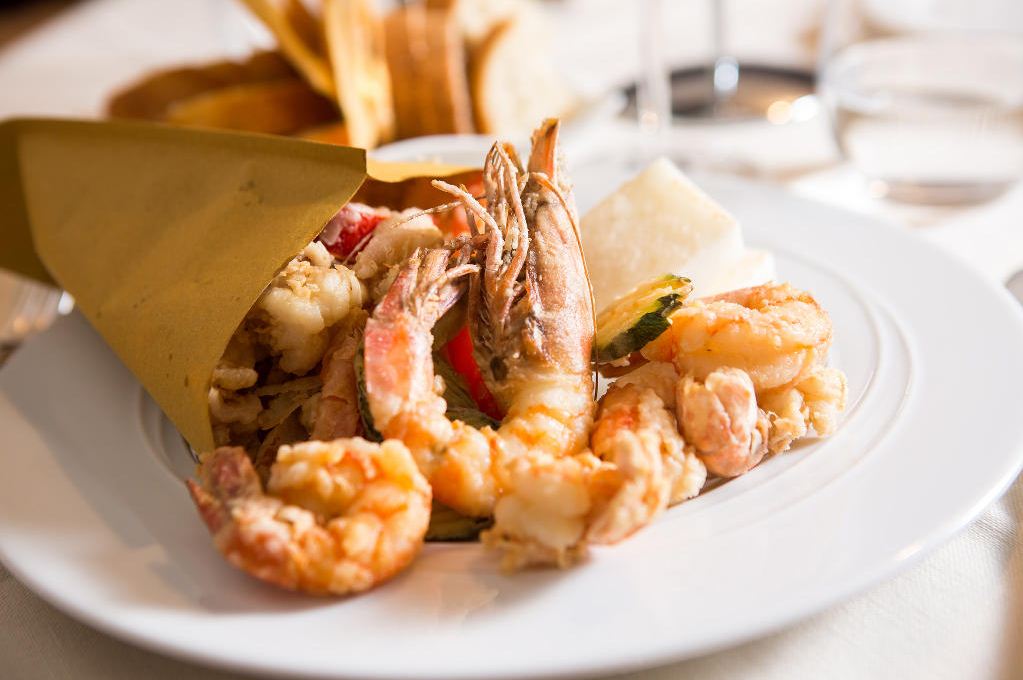
Pesce Fritto Al Cono is fresh, fried seafood served in a paper cone, which is convenient to take on the go. Depending on the catch of the day, the portion you get each day is different. So, it isn’t a surprise that the same amount of money buys you a cone full of fried fish one day and a mixture of shrimp and squid another day. At the end of the day, after wondering along the romantic roads of Rome or Venice, stop at a roadside food stall and wait for your Pesce Fritto Al Cono being deep-fried in front of you. What can make you hungrier than listening to the sound of the pan and the smell of seafood blended with frying powder? Take a cone full of crispy fish, and squid then add some lime and you’re ready to enjoy this interesting dish while continuing your stroll down the street.
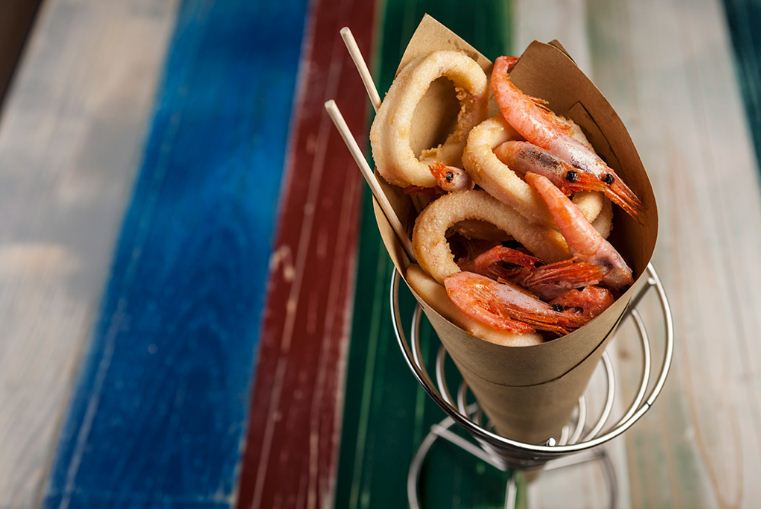
Scotchtails, UK — “Sunset” in paper box
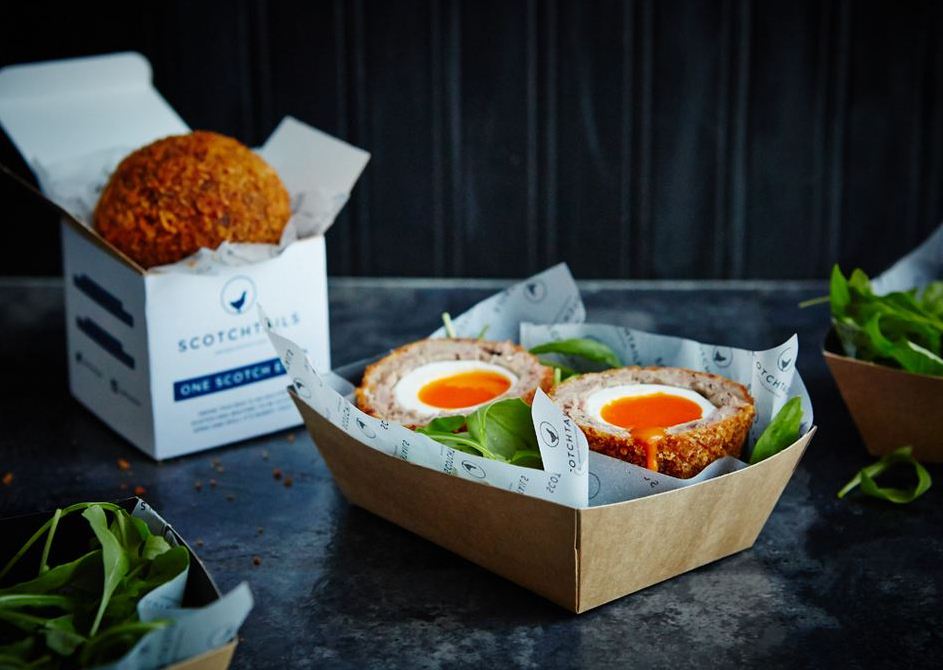
It’s widely believed that street food often has a less attractive appearance because it must be served quickly and easy to take on the go. However, Scotchtails (scotch eggs) from the UK is definitely an exception.
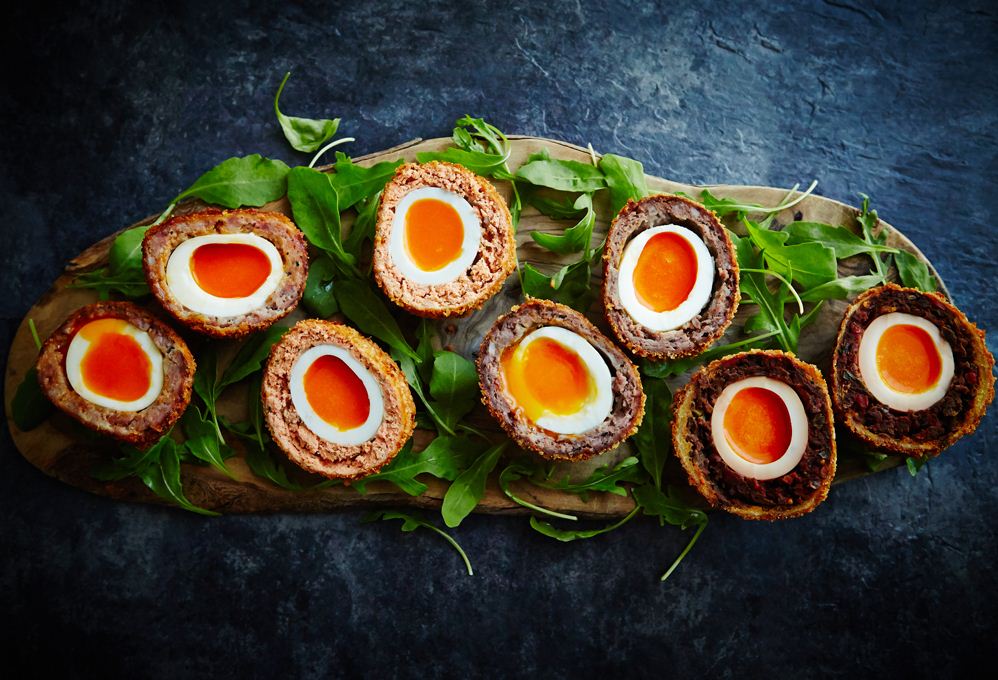
Its crust is made from a mixture of pureed meat. Diners can choose pork, beef, chicken or even fish. The meat is mixed with spices, pepper, onion and fennel to get rid of the bad odor and make this dish more flavorful. Eggs are stir-boiled and peeled before being wrapped by the mixture of meat. Lastly, scotch eggs are fried in a pan of boiling oil until they are yellow. The recipe is quite simple but what makes Scotchtails “a work of street art” is the chefs’ timing. They have to calculate the time just right so that the egg white is cooked and able to be peeled, but so that the yolk remains runny. Upon finishing, the eggs are placed onto kitchen paper and left to cool slightly before eating. Good Scotchtails must consist of three parts: crispy meat crust, egg white and egg yolk cooked to medium. Many bloggers say that the best Scotchtails feature an orange red yolk. The yolk looks like a small sun at dusk. With each portion, Scotchtails are cut in half and put into a “straw litter” with salad and potato fries. On a gloomy day in the UK, you can enjoy a portion of Scotchtails at Borough market and feel like you have just entered a colorful sunset.
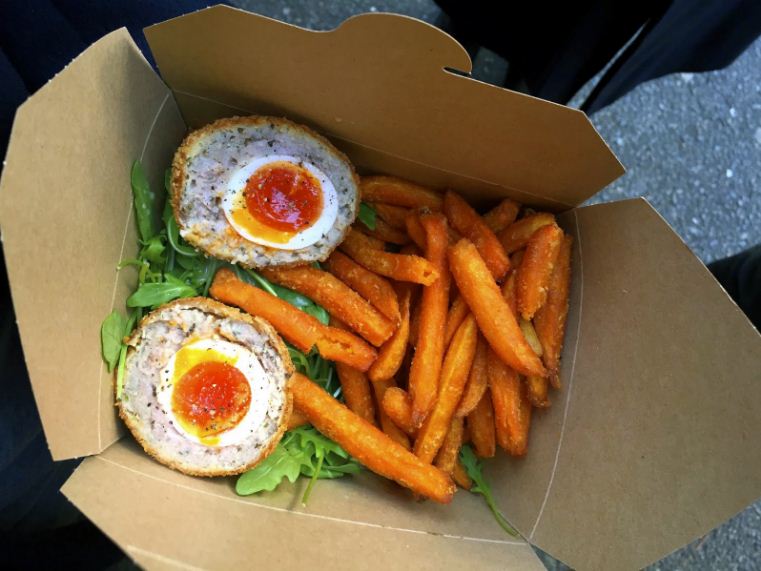
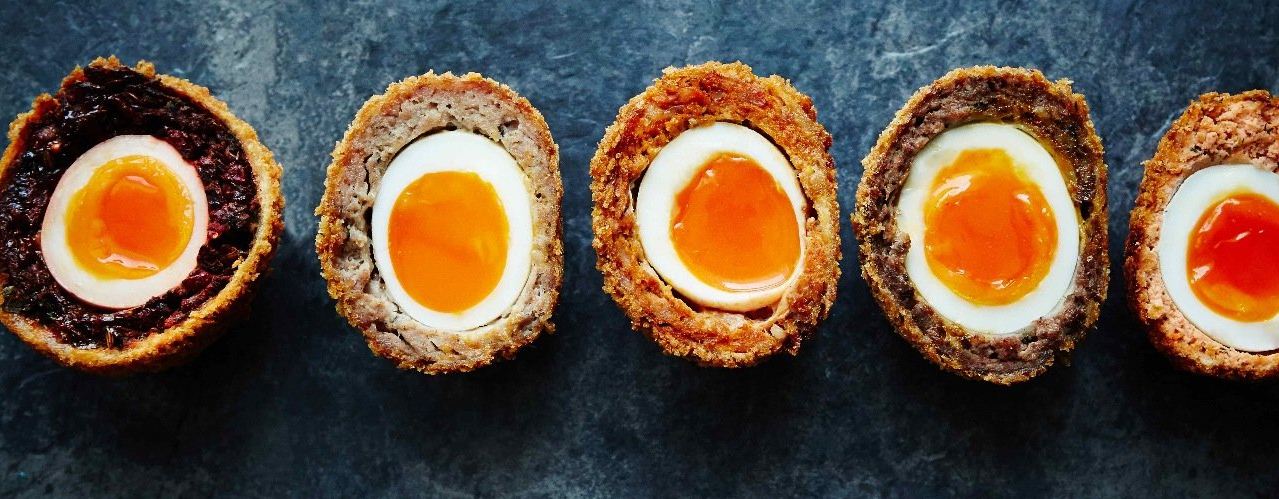
Churros, Spain — An irresistible confession of love
Churros are traditional Spanish desserts developed over centuries by Spanish shepherds. High up in the mountains, fresh baked goods were impossible to come by. Therefore, they came up with a delicious sweet cake, which they could easily cook over a fire. These cakes also provided them with enough energy during their long travels in the mountains. Nowadays, Churros are not only cooked at home and served at fancy restaurants but are also sold by street vendors.
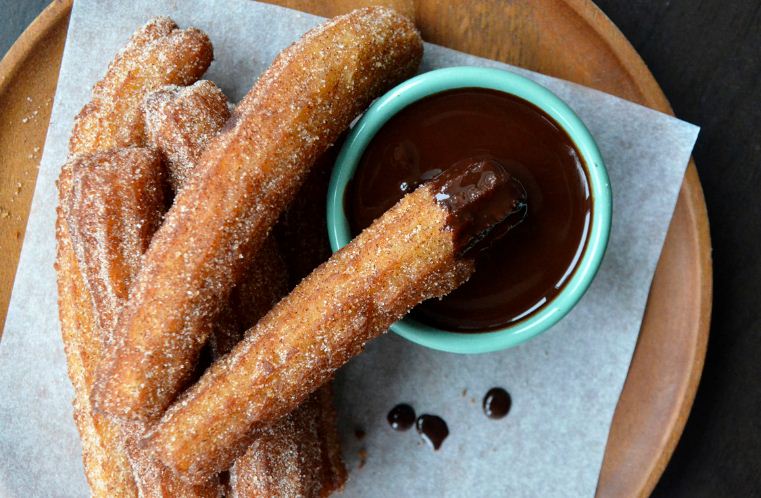
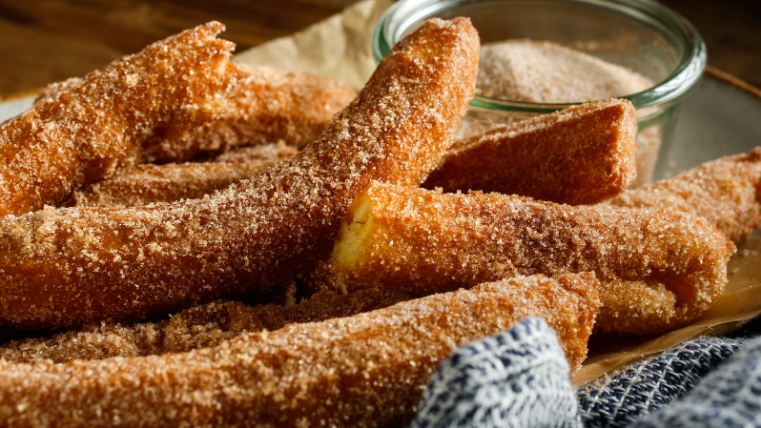
Traditionally, Churros are made from wheat flour, vanilla, egg yolk, milk and a little smoothly blended chocolate. The dough is shaped in small long cylindrical rods and then fried until they become crunchy. Street vendors may sprinkle a little cinnamon sugar on the surface of the churros. Also, this dish is served with chocolate sauce for dipping. It’s hard to refuse these greasy delicacies, which are soft on the inside and crispy golden brown on the outside, all dipped in melted chocolate sauce.
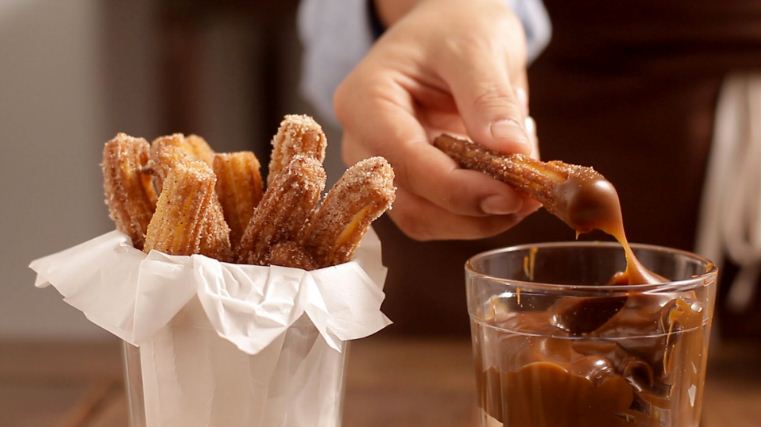
Apart from the traditional long rod, Churros are made in various shapes such as heart shapes, triangles and teardrops. More than a simple street food for Spanish teenagers, heart-shaped Churros are like a confession of love wishing to be shared with its lover. How can you resist these sweet things?
































![10 best airports in Asia in 2016 [RANKED] kuala-lumpur-international-airport-best airports in asia in 2016 by skytrax ratings](https://livingnomads.com/wp-content/uploads/2016/08/29/kuala-lumpur-international-airport-best-airports-in-asia-in-2016-by-skytrax-ratings-218x150.jpg)








